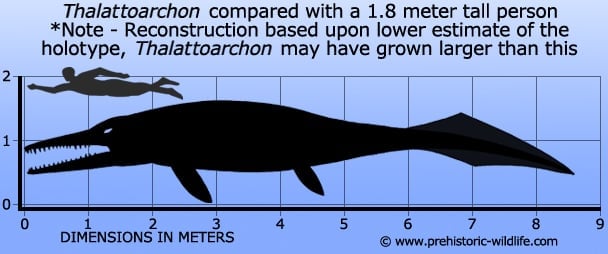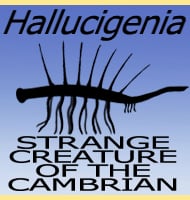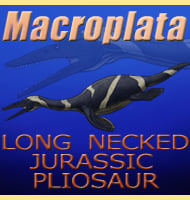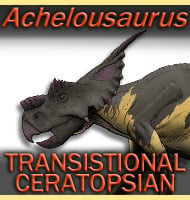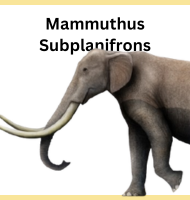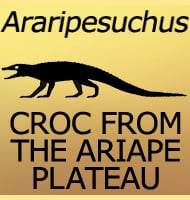In Depth
Thalattoarchon was a genus of primitive ichthyosaur that stands out as one of the earliest marine reptiles to be an apex predator of large aquatic organisms. What this means is that rather than focusing upon small prey like shoaling fish and squid like smaller ichthyosaurs, Thalattoarchon most probably hunted the smaller ichthyosaurs themselves as well as probably nothosaurs and other large aquatic creatures approaching Thalattoarchon itself in size.
There are two main clues about the presumed lifestyle of Thalattoarchon, the first is the immense size of the skull. In terms of body proportions, Thalattoarchon has been considered to have been similar to another ichthyosaur named Cymbospondylus in physical proportions, with the clear exception of the skull, which in Thalattoarchon is twice the size of Cymbospondylus. Second, the teeth of Thalattoarchon are large, flattened and have cutting edges on the front and rear. These are not the teeth of a piscivore (fish eater) since predators that hunt fish usually have thin needle-like teeth to pierce the slippery skin and scales of fish. The teeth of Thalattoarchon instead were supremely adapted to slicing through the flesh and muscle of other marine reptiles.
The teeth of Thalattoarchon have also given additionally credence to other large early Triassic ichhthyosaur genera. One example is the potentially colossal Himalayasaurus which in the past has been considered to be a dubious genus of ichthyosaur. Himalayasaurus was noted as being unusual because of the shape of the teeth, which are similar to those of Thalattoarchon, but with additional grooves of the tooth crowns. The tooth crowns of Thalattoarchon are smooth. There is little doubt that Thalattoarchon was a major predator of its day, but Earth’s history is full of large oceanic predators. A very short selection of them can be seen here on Top Ten Marine Predators.
Further Reading
- Macropredatory ichthyosaur from the Middle Triassic and the origin of modern trophic networks - Proceedings of the National Academy of Sciences - N. B. Fr�bisca, J. R. Fr�bisch, P. M. Sander, L. Schmitz, O. Rieppel - 2013.
